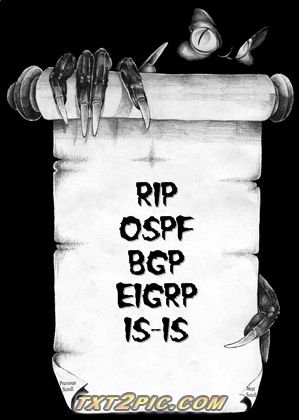BGP is TCP based. If you're got a router that wants to share BGP routes, each neighbor has to be explicitly configured. When this is done and BGP restarted, the router opens a BGP session to each of its neighbors on TCP/179 and chats about what routes it has and what routes it can learn.
If there are no routing updates, the routers exchange keep-alive packets every 60 seconds to be sure that the TCP session is still up and the routers are all happy.
When a BGP TCP session starts up, the BGP neighbor will show as state "Connect" when the router is actively trying to connect. If it successfully makes the connection, it shifts to state "OpenSent" and then through "OpenConfirm" to "Established".
If the router cannot make a successful TCP connection, it shifts to state "Active". NOTE: This does not mean that the connection has been made; just that it's actively trying to make the TCP connection. If your neighbors show as "Active", your routing is *not* working yet. Once the TCP session is established, the neighbor state goes through "OpenSent" and "OpenConfirm" to "Established". That last state, "Established" is the one you want to see in your summary of BGP neighbor states.
On a Cisco, your neighbor summary table would look something like this (taken from
Cisco IOS IP Command Reference Vol 2 of 4: Routing Protocols, Release 12.3T - IP Routing Protocols Commands):
Router# show ip bgp summary
BGP router identifier 172.16.1.1, local AS number 100
BGP table version is 199, main routing table version 199
37 network entries using 2850 bytes of memory
59 path entries using 5713 bytes of memory
18 BGP path attribute entries using 936 bytes of memory
2 multipath network entries and 4 multipath paths
10 BGP AS-PATH entries using 240 bytes of memory
7 BGP community entries using 168 bytes of memory
0 BGP route-map cache entries using 0 bytes of memory
0 BGP filter-list cache entries using 0 bytes of memory
36 received paths for inbound soft reconfiguration
BGP using 34249 total bytes of memory
Dampening enabled. 4 history paths, 0 dampened paths
BGP activity 37/2849 prefixes, 60/1 paths, scan interval 15 secs
Neighbor V AS MsgRcvd MsgSent TblVer InQ OutQ Up/Down State/PfxRcd
10.100.1.1 4 200 26 22 199 0 0 00:14:23 23
10.200.1.1 4 300 21 51 199 0 0 00:13:40 0
There are three fields that you're probably most interested in under normal circumstances:
- The first one to look at is "State/PfxRcd": If the TCP session is up and the routers are exchanging routes, then this field will be a numeric value that shows how many route prefixes have been received from the remote neighbor.
- The next one of note is "TblVer", which is the routing table version. Under normal circumstances, this should be the same if routing is stable.
- The third field of interest is the "Up/Down". If the BGP session to the neighbor is up and happy in the "Established" state, this is the duration of the current TCP session. If it's not up and happy, this will display the current state of the connection. Remember, "Active" is not what you want to see here. (Yes, I'm harping on it, but I've seen many people make the mistake of thinking that "Active" means that the connection is working correctly.)
This table (Table 41 in the same document) lists all the fields in the output and what they indicate.


